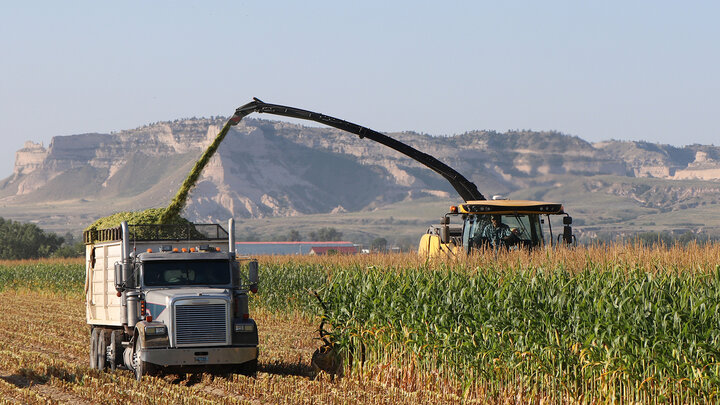During a visit from the U.S. Risk Management Agency’s top official, two irrigation districts in the North Platte Valley have selected repair and upgrade options for three tunnels along the main supply canal that they share, one of which collapsed during the 2019 irrigation season.
The main canal for the Goshen and Gering-Fort Laramie irrigation districts begins at the Whalen Diversion Dam, near Guernsey, Wyo., where water is diverted from the North Platte River to run 129 miles through Goshen County, Wyo., and Scotts Bluff County, Nebr. The canal delivers water to about 107,000 acres of cropland in the two irrigation districts. A collapse in Tunnel No. 2, one of three tunnels on the supply canal, disrupted water deliveries for about six weeks in July, August, and September 2019.
On Monday, December 9, 2019, Martin Barbre, chief administrator of the USDA Risk Management Agency and Manager for the Federal Crop Insurance Corporation, toured the tunnel collapse site and canal breach on the Goshen Irrigation District (GID) and the Gering-Fort Laramie Irrigation District (GFD) canal. Barbre wanted to see the situation and gain a better understanding of the challenges facing the irrigation districts and producers in the affected area of the North Platte River Valley and the solutions to help fix the tunnels.
Per the recommendations from the US Bureau of Reclamation, both irrigation districts have decided to have more “ribs” or supports installed in Tunnel No. 2 and continue the grouting, or filling the void between the tunnel wall and the surrounding soil. Similar upgrades are being made to Tunnel No. 1, (upstream in Wyoming) and will also be made to portions of Tunnel No. 3 (downstream in Scotts Bluff County, Nebr). Final upgrades/repairs to the tunnels are expected to be completed in 2021.
The North Platte Project was constructed by the Bureau of Reclamation more than 100 years ago.
Two major questions still facing the irrigation districts are funding to pay for all of the repairs and how much water can flow through the tunnels after the repairs. The installation of the “ribs” in the tunnels is expected to reduce the amount of water flowing through. The irrigation districts will not know for certain the amount of flow reduction until the irrigation season begins in May 2020. Growers in these irrigation districts need to consider this possibility of water reduction for their 2020 cropping plans.
Nebraska Extension and the University of Wyoming Extension are working together to share information and help growers in both states understand their options during this situation. A joint web page has been created so stakeholders can get information relating to the situation. The URL is go.unl.edu/canal
For more information on the North Platte River and the irrigation projects in Nebraska and Wyoming, visit the SlideShare presentation found on the University of Nebraska Panhandle Research and Extension Center web site,
Previous CropWatch stories and articles on the tunnel collapse, canal breach, and related information are found at




